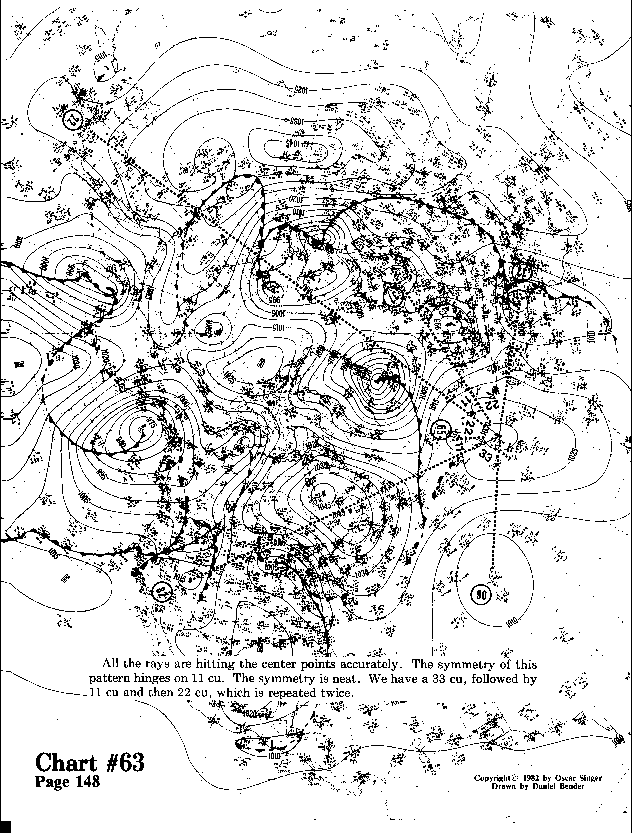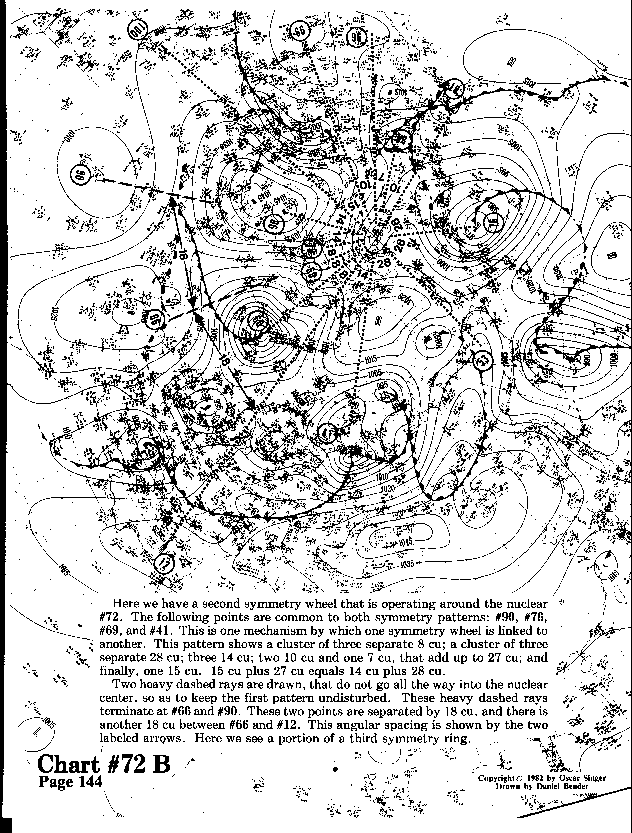
In this chart, dotted (.........) lines are used for the rays when they terminate exactly at a vortex or col center, while dot-dash (.-.-.-) lines are used when the rays terminate off-center. As usual, the symmetry pattern is extablished only with those vortexes that are directly at the end of a given ray. The other points that are not perfect hits are entered as a matter of interest.
In this example, 5 cu is the symmetry feature that predominates, with one 6 cu and one 16 cu necessary to complete the circle of 192 cu.
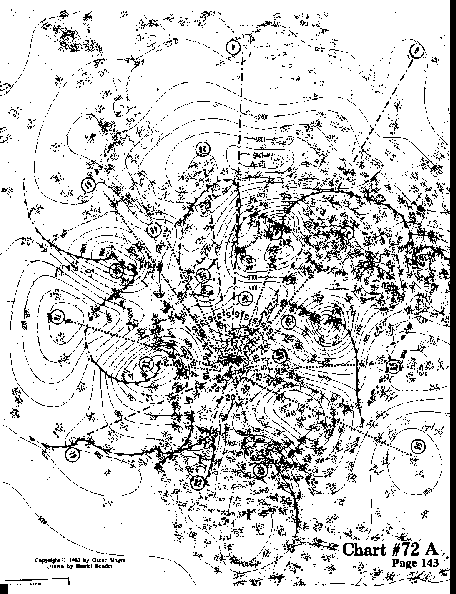
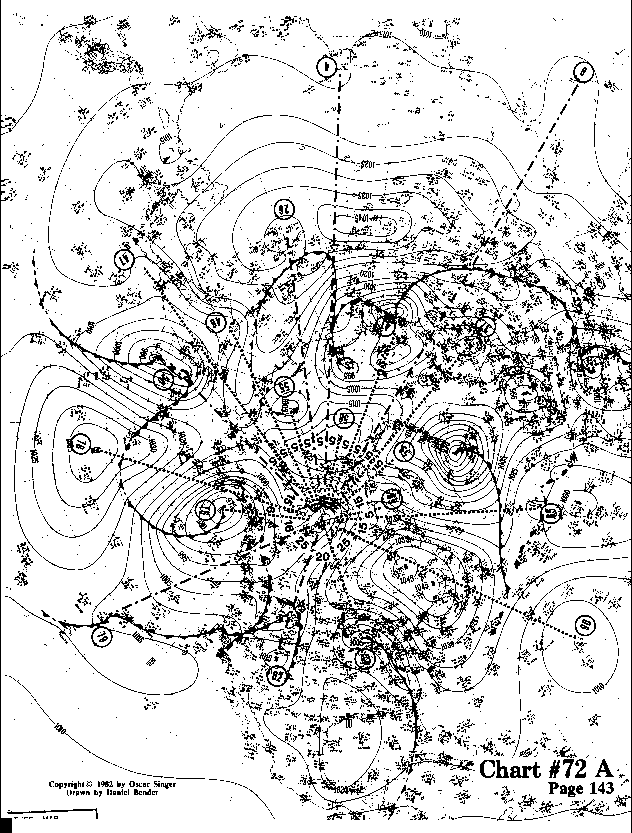
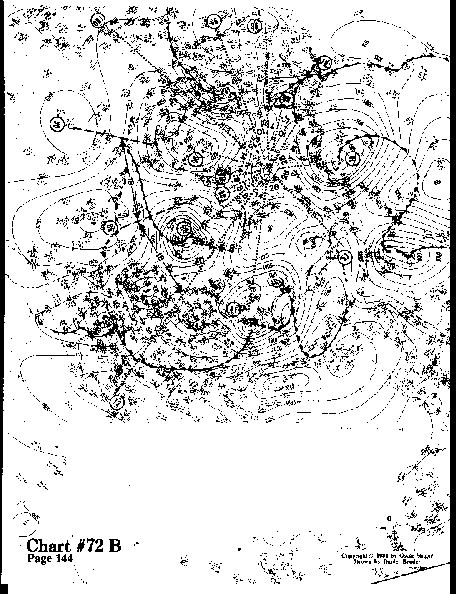
Here we have a second symmetry wheel that is operating around the nuclear #72. The following points are common to both symmetry patterns: #90, #76, #69, and #41. This is one mechanism by which one symmetry wheel is linked to another. This pattern shows a cluster of three separate 8 cu; a cluster of three separate 28 cu; three 14 cu; two 10 cu and one 7 cu, that add up to 27 cu; and finally, one 15 cu. 15 cu plus 27 cu equals 14 cu plus 28 cu.
Two heavy dashed rays are drawn, that do not go all the way into
the nuclear center, so as to keep the first pattern undisturbed.
These heavy dashed rays terminate at #66 and #90. These two points
are separated by 18 cu, and there is another 18 cu between #66
and #12. This angular spacing is shown by the two
labeled arrows. Here we see a portion of a third symmetry ring.

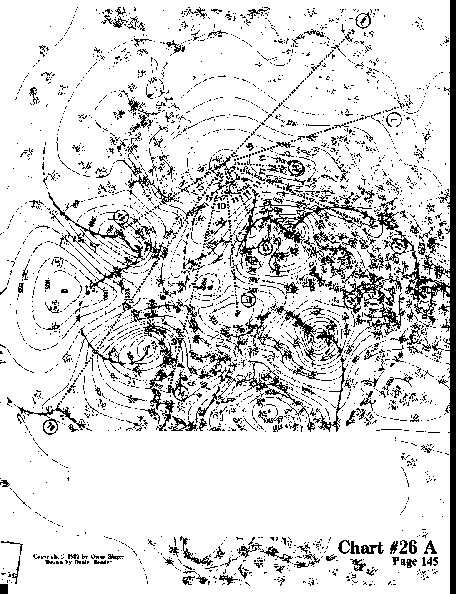
In this case, #6, #18, #29, #58, and #79 are good hits-the rest are so-so. The symmetry in this pattern is based on an angle of 11 cu. Inspection will show that the 10 cu is squeezed between two 11 cu, with one 12 cu on the side. The angle between #49 and #79 has increased by 1 cu, to become 12 cu. This angle has taken up the slack created by the 10 cu between #74 and #58.
There is one 15 cu between #6 and #7. There is another symmetry
pattern coexisting simultaneously with the one shown on this chart.
The 15 cu was entered to show how it is hooked to #7, which is
in the symmetry pattern involving the 11 cu. The next chart will
show how 15 cu is involved in a different pattern.
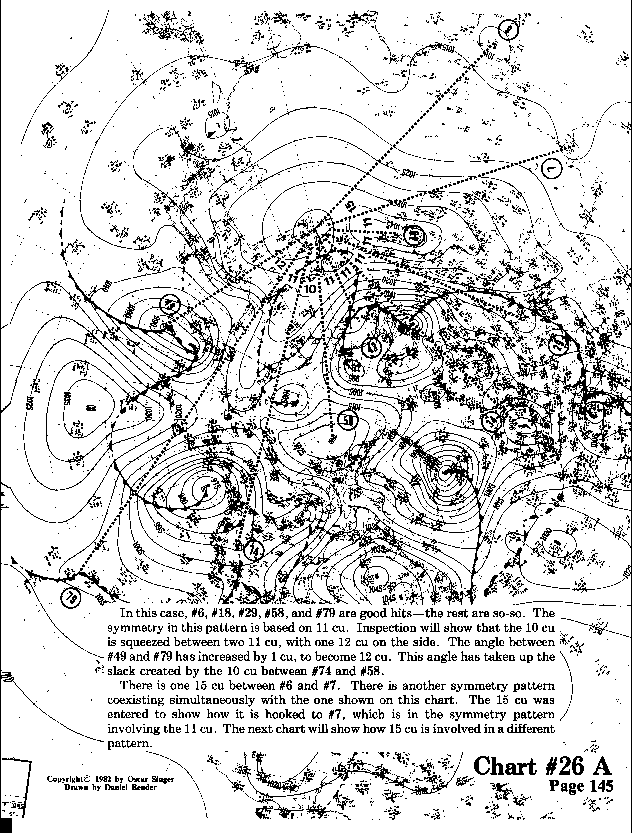
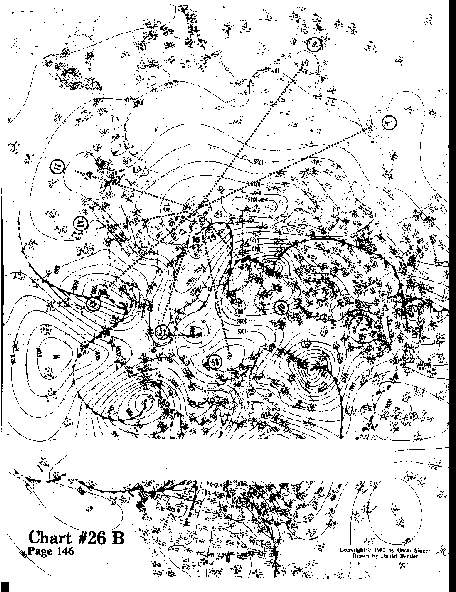
The rays hit all the center points accurately except for #53, which is off a
little. Here we have a central 17 cu, balanced symmetrically
on both sides by two 16 cu and two 15 cu, with another 15 cu almost
diametrically opposite the 17 cu.
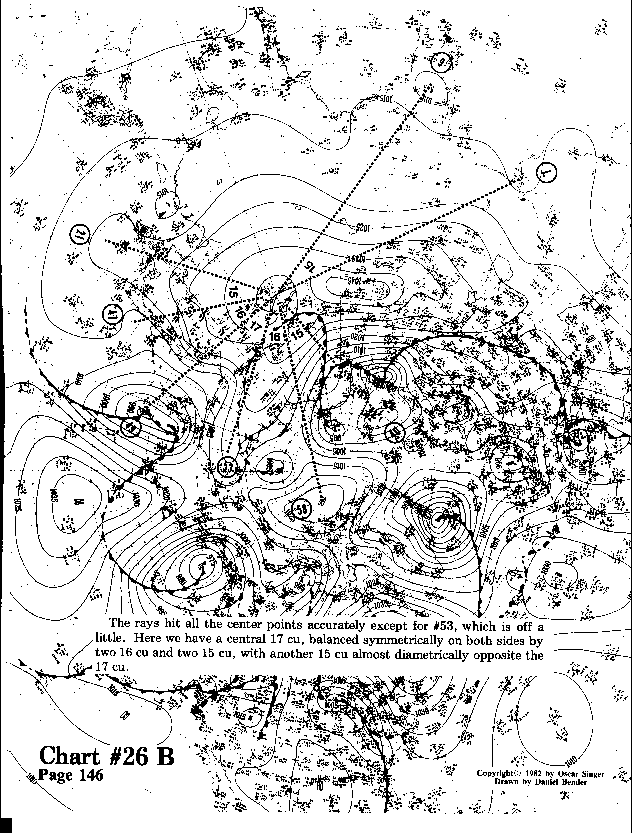
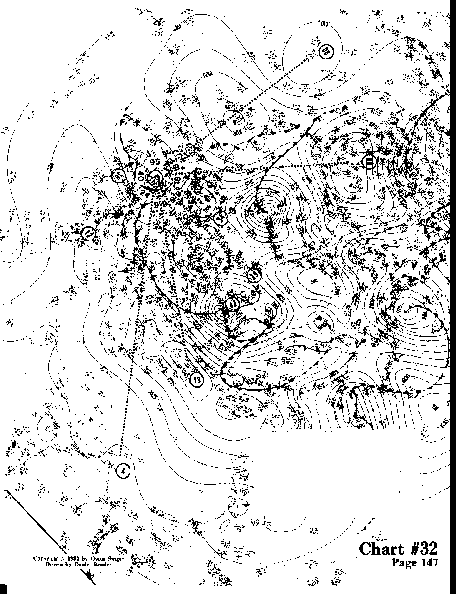
All the rays hit the center points quite accurately, except
for #42, which is slightly off. The symmetry of this
pattern is created by 8 cu and 9 cu. We see four 9 cu
next to two 18 cu. The four 9 cu can be considered as being two
18 cu, side by side. Next, we have in ascending order: 24 cu (3x8 cu),
40 cu (5x8 cu), and 56 cu (7x8 cu).
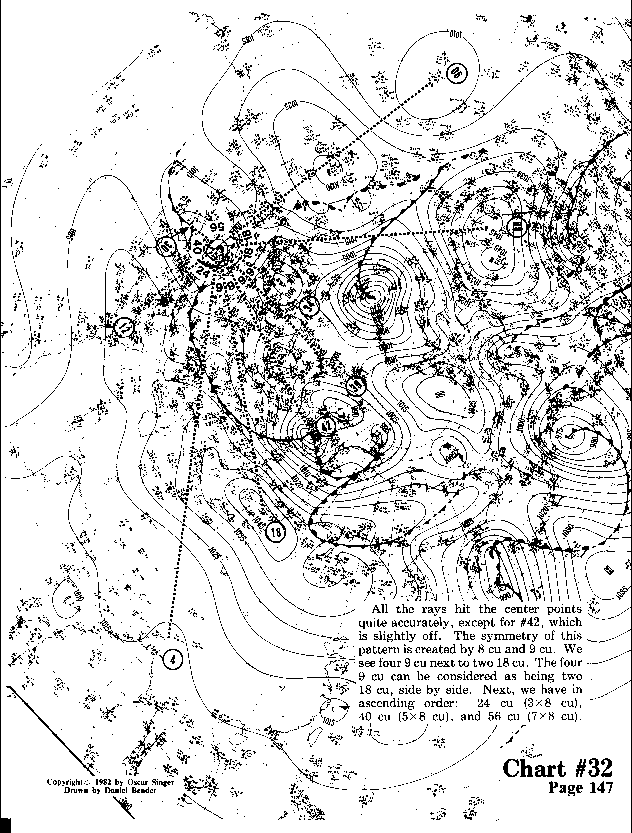
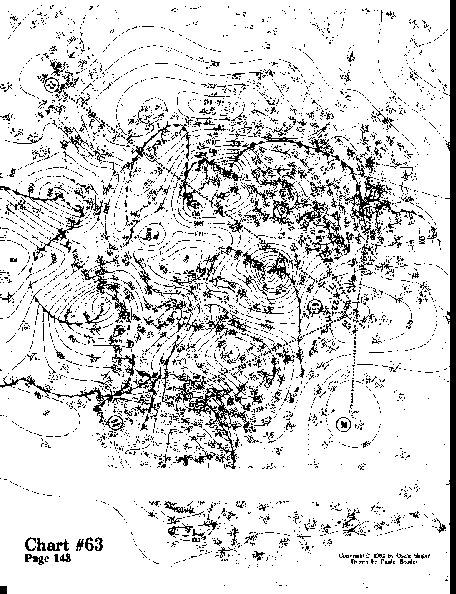
All the rays are hitting the center points accurately. The symmetry
of this pattern hinges on 11 cu. The symmetry is neat. We have
a 33 cu, followed by 11 cu and then 22 cu, which is repeated
twice.
